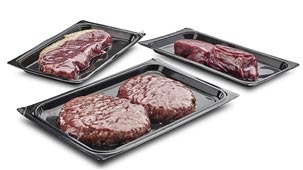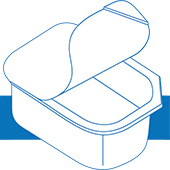Fresh meat packaging, such as beef and chicken due to competitive factors in modified atmosphere packaging (MAP) seems to be an attractive challenge.
The type of bacteria that tend to spoil meat is called aerobic bacteria, they need oxygen to survive, so the atmosphere with less oxygen may seems desirable.
However, for meat products, especially red meat such as beef, one of the main maintenance problems is whether the meat can retain attractive red color or not? Because in the open-air meat tends to turn brown.
Fresh meat color is largely determined by the myoglobin protein found in the tissue of the product. Myoglobin itself is purple, but it can react with oxygen to form two other pigments, oxy myoglobin, which is red, and meth, myoglobin, which is brown.
In the air, the concentration of oxygen is such that the tendency to form metmyoglobin changes the brown.
However, with higher concentrations of oxygen, red oxy myoglobin is more likely to occur.
So, by using the right gas mixture with MAP method, typically between 60% and 80% oxygen, fresh meat retains its color appeal. In addition, red meat, such as beef, needs higher oxygen than pale meats.
So, under what conditions can bacteria not cause damage? Fortunately, a gaseous mixture with carbon dioxide can significantly inhibit the growth of aerobic bacteria.
Also, by using a gaseous compound with 20% of carbon dioxide, we can stop the growth of germs that can spoil fresh meat, thus achieving two Important goals, such as attractive appearance and low failure rate.
Comments
Post comment
Comments sent by you will be published after the approval of the website administrator.


